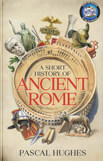Noiser
What Was the Russian Revolution?
Play Short History Of... The Russian Revolution
For hundreds of years, the Romanov tsars held power in an empire spanning almost seven million square miles. But in 1917, a massive uprising toppled their regime, forever changing the shape of Russia and the world.
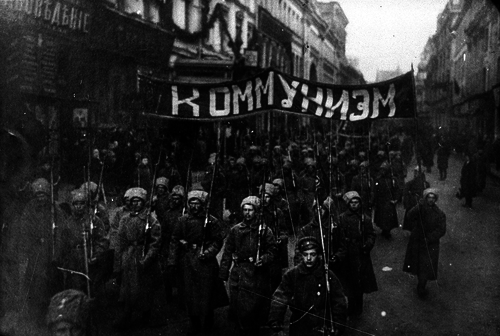
A Separated Russia
For nearly three centuries, the Romanov dynasty reigned over Russia. But despite their extreme wealth, they did little to help the hundred million peasants. In the mid-19th century, the Tsar, Alexander the Second, made changes that were a clear move towards trying to give his people a better life. The most impactful of these being the Emancipation of the Serfs in 1861 which freed millions of peasants from a system of bondage that was essentially slavery.
But for the growing number of dissidents, his efforts were not enough. They wanted more radical reforms, including a constitutional monarchy or even a republic. So a revolutionary organisation called the People's Will began plotting to assassinate the tsar to spark a political uprising. In 1881, they bombed Tsar Alexander's carriage as he crossed St Petersburg.
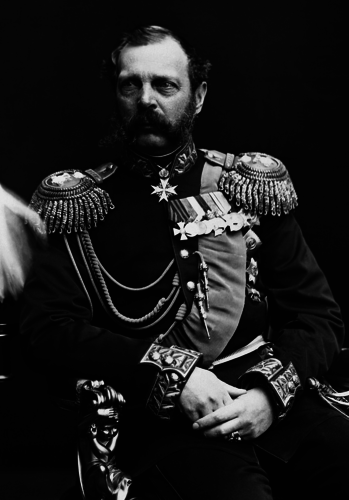 The death of the Tsar rocked the House of Romanov. When Alexander III took the throne, he came down hard on the revolutionaries. The planned creation of a semi-democratic parliament was abandoned. War with Japan left the country poorer than ever. Disillusioned, the ranks of the People's Will started to grow.
The death of the Tsar rocked the House of Romanov. When Alexander III took the throne, he came down hard on the revolutionaries. The planned creation of a semi-democratic parliament was abandoned. War with Japan left the country poorer than ever. Disillusioned, the ranks of the People's Will started to grow.
Bloody Sunday
On January 9th, 1905, Father Gregory Gapon met with a group of people on the outskirts of Petrograd (now St. Petersburg). He was determined to improve the lot of the poor, hungry, and overworked peasants. He planned on presenting a petition to the Tsar, begging for a living wage, freedom of speech, and education. Around 150,000 people had signed it.
But as the priest led the large group of like-minded people onto the Stachek Prospekt, Russian troops opened fire. By evening, what started as a respectful march had become a bloodbath. As night fell, around a thousand people were dead.
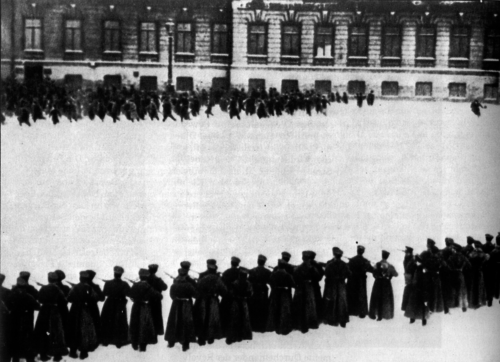
It was a moment when Nicolas, if he had genuinely wanted to be a forward-looking, reforming tsar, could have made compromises. And he missed his moment.
Dr Helen Rappaport, author of Caught in the Revolution and After the Romanovs
The day would be known as Russia’s Bloody Sunday, triggering strikes and revolts across the country. Though the Tsar’s autocracy would survive, for now, it was also a dress rehearsal for a much bigger event just over a decade away.
The February Revolution
On February 23rd 1917, a peaceful protest in Petrograd quickly turned to pandemonium. Violence erupted, and shops were looted. The next day, the same thing happened. Three hundred thousand people joined the demonstration, and this time, when the crowd became too much to control, the police opened fire. By nightfall, bodies littered the streets.
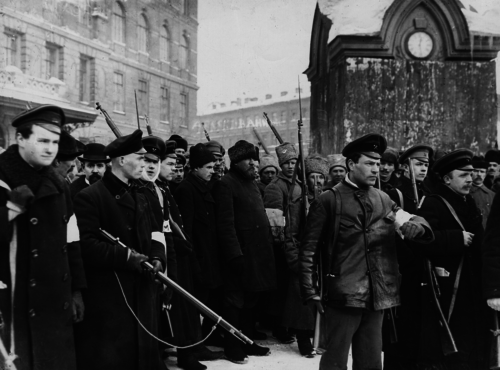 The protests continued, and by Monday, February 27th, lawless mobs tore through the streets. The message was getting through to the Russian leader - the people had had enough. Hundreds of kilometres away, the Tsar finally accepted that he'd run out of road. On March 2nd 1917, Tsar Nicholas II abdicated. Three centuries of Romanov rule had come to an end.
The protests continued, and by Monday, February 27th, lawless mobs tore through the streets. The message was getting through to the Russian leader - the people had had enough. Hundreds of kilometres away, the Tsar finally accepted that he'd run out of road. On March 2nd 1917, Tsar Nicholas II abdicated. Three centuries of Romanov rule had come to an end.
The Rise of Lenin
With a power vacuum to fill, a young Vladimir Lenin spied an opportunity. Advocating for a true socialist revolution, he led his campaign with the slogan 'Bread, Peace and Land', and the ranks of the Bolsheviks (a far-left faction of the Marxist Russian Social Democratic Labour Party) swelled. Soon, working people were demanding higher pay and shorter hours.
In Petrograd, the electricity supply was only available for a few hours. Food was becoming perilously scarce. Trains bringing supplies were plundered before they even got inside the city, and for hours at a time, women queued for bread in plummeting temperatures. With a complete absence of street lighting or any functioning police force, crime skyrocketed. Something had to be done.
The October Revolution
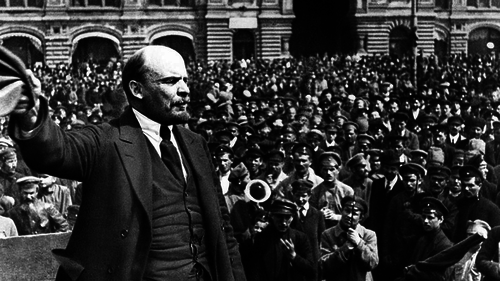 On October 25, 1917, Lenin and the Bolsheviks launched a well-planned coup against the provisional government. The storming of the Winter Palace in Petrograd was a symbolic act that marked the revolution's success. The Bolsheviks took control of key institutions and declared a new government, the Council of People's Commissars, with Lenin as its head.
On October 25, 1917, Lenin and the Bolsheviks launched a well-planned coup against the provisional government. The storming of the Winter Palace in Petrograd was a symbolic act that marked the revolution's success. The Bolsheviks took control of key institutions and declared a new government, the Council of People's Commissars, with Lenin as its head.
October was effectively a low-key coup. By then, everything was falling apart economically in Russia; it was anarchy.
Dr Helen Rappaport, author of Caught in the Revolution and After the Romanovs.
Lenin set about instituting his vision of a new socialist order. He proposed the abolition of private property and the redistribution of land. Banks were nationalised, and an 8-hour working day was promised. Everyone became known simply as 'comrade'.
But he wasn't the free thinker everyone thought he was. He quickly banned political meetings and outlawed the free press. Charged with rooting out political dissent, the secret police force known as the Cheka was established, a forerunner of the KGB.
Aftermath
The Bolshevik takeover was not universally accepted, leading to a brutal civil war between the Red Army (Bolsheviks) and the White Army (anti-Bolsheviks). The civil war, which lasted from 1917 to 1923, resulted in millions of deaths and widespread destruction.
The Bolsheviks eventually emerged victorious, consolidating their power and laying the foundations for the Soviet Union. In 1922, the Union of Soviet Socialist Republics (USSR) was formally established, with Moscow as its capital. Seventy-two hours after Lenin's death in 1924, Petrograd was renamed Leningrad.
The violent fall of the tsarist regime filled the working people of Russia with renewed optimism. But what came next – hunger, purges, hundreds of millions of lives lived under the shadow of dictatorship – could hardly have been what they hoped for. Out of a desire for freedom from poverty and inequality came one of the world's most horrifying regimes, the legacy of which dominates headlines even now.
